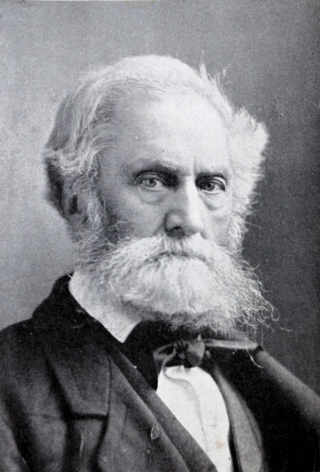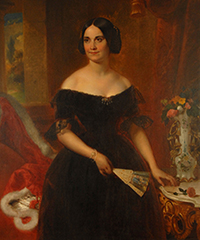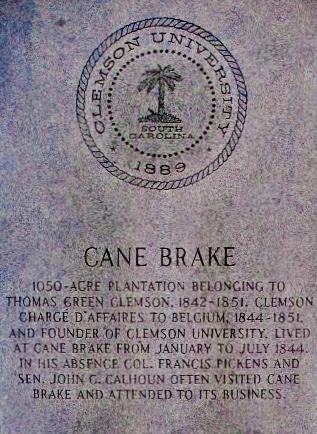
John Caldwell Calhoun was an American statesman and political theorist who served as the seventh vice president of the United States from 1825 to 1832. Born in South Carolina, he adamantly defended American slavery and sought to protect the interests of white Southerners. Calhoun began his political career as a nationalist, modernizer and proponent of a strong federal government and protective tariffs. In the late 1820s, his views changed radically, and he became a leading proponent of states' rights, limited government, nullification, and opposition to high tariffs. Calhoun saw Northern acceptance of those policies as a condition of the South's remaining in the Union. His beliefs heavily influenced the South's secession from the Union in 1860 and 1861. Calhoun was the first of two vice presidents to resign from the position, the second being Spiro Agnew, who resigned in 1973.
Durham most commonly refers to:

Clemson University is a public land-grant research university near Clemson, South Carolina, United States. Founded in 1889, Clemson is the second-largest university by enrollment in South Carolina. For the fall 2023 semester, the university enrolled a total of 22,875 undergraduate students and 5,872 graduate students, and the student/faculty ratio was 15:1.

Clemson is a city in Pickens and Anderson counties in the U.S. state of South Carolina. Clemson is adjacent to Clemson University, and is identified with it. In 2015, the Princeton Review cited the town of Clemson as ranking #1 in the United States for "town-and-gown" relations with its resident university. The population of the city was 17,681 at the 2020 census.

Thomas Green Clemson was an American politician and statesman, serving as Chargés d'Affaires to Belgium, and United States Superintendent of Agriculture. He served in the Confederate Army and founded Clemson University in South Carolina. Historians have called Clemson "a quintessential nineteenth-century Renaissance man." He was an owner of enslaved persons.

The Calhoun Mine is perhaps the oldest and best-known mine in Lumpkin County, Georgia. When gold was discovered in Lumpkin County in 1828, which led to the Georgia Gold Rush in 1829, it was discovered on 239 acres (0.97 km2) owned by Robert Obar. After at least two intermediary sales, the land was purchased by Senator John C. Calhoun of South Carolina, who later served as the 7th Vice President of the United States. Calhoun started a mining company to mine the land and later allowed his son-in-law Thomas Green Clemson, the founder of Clemson University, to manage it. The ore deposit was a very rich deposit and, according to an 1856 letter from Clemson to his brother-in-law, was still producing significant quantities of gold nearly 30 years after its initial discovery on the land. This mine - along with the Consolidated Mine and the Loud Mine - were some of the most productive mines in the Georgia Gold Belt.

USS Clemson (DD-186/AVP-17/AVD-4/APD-31) was the lead ship of her class of destroyers which served in the United States Navy during World War II. She was named for Midshipman Henry A. Clemson (1820–1846), who was lost at sea when the brig USS Somers capsized in a sudden squall off Vera Cruz on 8 December 1846 while chasing a blockade runner. Entering service in 1919, the ship had a brief active life before placed in reserve in 1922. Converted to an aircraft tender in 1939, the ship reactivated in 1940. In 1943, Clemson reconverted to a destroyer and served in the Battle of the Atlantic during World War II. In 1944, the ship was converted into a high speed transport and transferred to the Pacific taking part in several invasions. Following the end of the war, the ship was taken out of service again and sold for scrapping in 1946. As of 2024, she is the only ship in the United States Navy to have received the name Clemson.

Floride Bonneau Calhoun was the wife of U.S. politician John C. Calhoun. She was known for her leading role in the Petticoat affair, which occurred during her husband's service as vice president of the United States. In that role, Mrs. Calhoun led the wives of other Cabinet members in ostracizing Peggy Eaton, the wife of Secretary of War John Eaton, whom they considered a woman of low morals. The affair helped damage relations between John C. Calhoun and President Andrew Jackson, and effectively ended any legitimate chance of John Calhoun becoming president of the United States.

Patrick Calhoun was the grandson of John C. Calhoun and Floride Calhoun, and the great-grandson of his namesake Patrick Calhoun. He is best known as a railroad baron of the late 19th century, and as the founder of Euclid Heights, Ohio.

Fort Hill, also known as the John C. Calhoun House and Library, is a National Historic Landmark on the Clemson University campus in Pickens County, South Carolina, United States, near the City of Clemson.

Gideon Lee was an American politician who was the 60th Mayor of New York City from 1833 to 1834, and United States Representative from New York for one term from 1835 to 1837.
Floride Elizabeth Clemson was the daughter of Clemson University founder Thomas Green Clemson, and the granddaughter of former Vice President John C. Calhoun and his wife, Floride Calhoun. Clemson was most acknowledged for her diary that took place during and after the Civil War. Her diary states her journey to South Carolina by multiple forms of transportation in just a little under two weeks.
The Campus of Clemson University is located in unincorporated Pickens County, South Carolina, adjacent to Clemson; the U.S. Census Bureau designates the campus as a census-designated place.

Anna Maria Calhoun Clemson was the daughter of John C. Calhoun and Floride Calhoun, and the wife of Thomas Green Clemson, the founder of Clemson University.

Benjamin Franklin Robertson Jr. was an American writer, journalist and World War II war correspondent. He is best known for his renowned Southern memoir Red Hills and Cotton: An Upcountry Memory, first published in 1942 and still in print. A native of Clemson, South Carolina, a horticulture graduate of Clemson Agricultural College of South Carolina, class of 1923, and writer for The Tiger, the college student newspaper. He was an honorary member of Gamma Alpha Mu local writers fraternity. He died in 1943 in a plane crash in Portugal. The SS Ben Robertson, launched in Savannah, Georgia, in 1944, was named for him.
Paul Hamilton may refer to:

The Clemson Area African American Museum (CAAAM) is a museum located in Calhoun Bridge Center, Clemson, South Carolina, United States. The Museum focuses on historical achievements and culture of African Americans.

Tillman Hall is the most famous building on the Clemson University campus. The 3-story brick building with a clock tower is located on a hill overlooking Bowman Field. Tillman Hall is currently the home of the College of Education.
Ezekiel Pickens was an American lawyer and politician; he served as the Lieutenant Governor of South Carolina from 1802 to 1804.

Cane Brake was a plantation home in Saluda, South Carolina, an historic property of Thomas Green Clemson of Philadelphia, Pennsylvania, after whom Clemson University is named.














